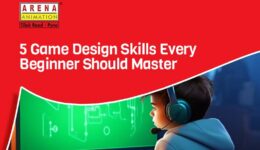5 Game Design Skills Every Beginner Should Master
Imagine a world where you have the power to create […]

Imagine a world where you have the power to create […]

Date : 24th July, 2023 Venue : Savitribai Phule Auditorium […]

Career Opportunities in the Gaming Industry A global phenomenon that […]

VFX Short Courses: Quick and Effective Ways to Learn VFX […]

Visual Effects (VFX) refers to the techniques and processes used […]

The 2023 graphic design trends are here, ushering in another […]